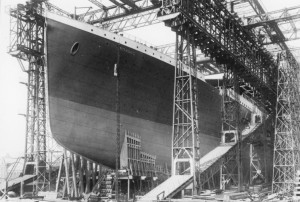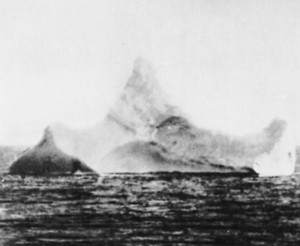
Interest in the history of the Titanic is prevalent even during current time. One of the most magnificent vessels to ever sail the Atlantic ocean, the Titanic was the epitome of craftsmanship, technology and majesty. The history of the Titanic is a rich landscape of triumph, tragedy, and mystery with artifacts and information still surfacing even after nearly 100 years since the event. No other vessel in history has drawn as much attention as the history of the Titanic, and as a result, a myriad of books, films, and other forms of media have been released in order to recount the events of April 14, 1912 and offer new facts and insight into the tragedy.
Titanic construction began in March 31, 1909 in Belfast, Ireland and was the project of White Star Liners and was built at the Harland & Wolff shipyard. Length of the Titanic construction spanned about three years and cost nearly $7.5 million to build. A technological marvel of its time, the Titanic contained eighteen water tight containers fitted with steel doors designed to close within 25 seconds in order to keep water out of the ship’s interior. Construction of the Titanic took the work of about 3000 laborers and nearly 3 million rivets. White Star had also constructed a smaller version of the Titanic called the Olympic just a year earlier. Both ships were designed to be the most luxurious ocean liners in operation at the time.
On the Titanic’s maiden voyage, the ship embarked from Southampton, England destined for New York on April 10, 1912. With the passengers all aboard waving to loved ones from the port-side rails, the most luxurious cruise liner set sail for the U.S. The sheer power of the vessel was enough to snap the moorings of the vessel called New York with the amount of water the Titanic displaced. The Titanic sailed to Cherbourg in France and later to Queenstown in Ireland to pick up additional passengers. There were 1320 passengers and 907 crew. The first few days were uneventful and Captain John Smith continued to increase speed day by day.

Many Titanic history buffs contend that the Titanic’s downfall came due to the increase speed through iceberg rich waters.
Many Titanic history enthusiasts believe that multiple warnings were sent out by vessels traversing the same waters as the Titanic warning of large iceberg sightings in the water. Some accounts speak of the wireless operator ignoring these messages stating that he had bigger concerns on his hands, and others believe that Captain Smith simply ignored the warnings. The Titanic history has stated that beyond a shadow of a doubt that when the Titanic did finally collide with the iceberg, the blow was glancing and popped out thousands of rivets that held the plating to the hull. This caused the hull of the Titanic to buckle and take on large amounts of water. This is when the Titanic disaster began.
Here are historical notes and Titanic facts.

